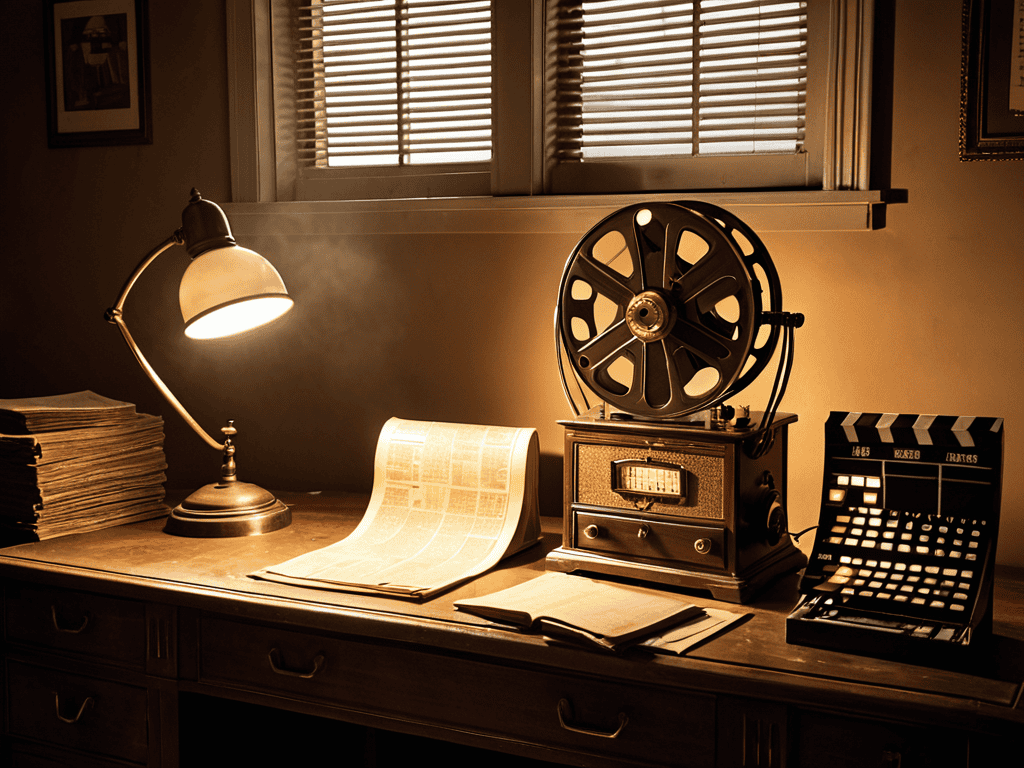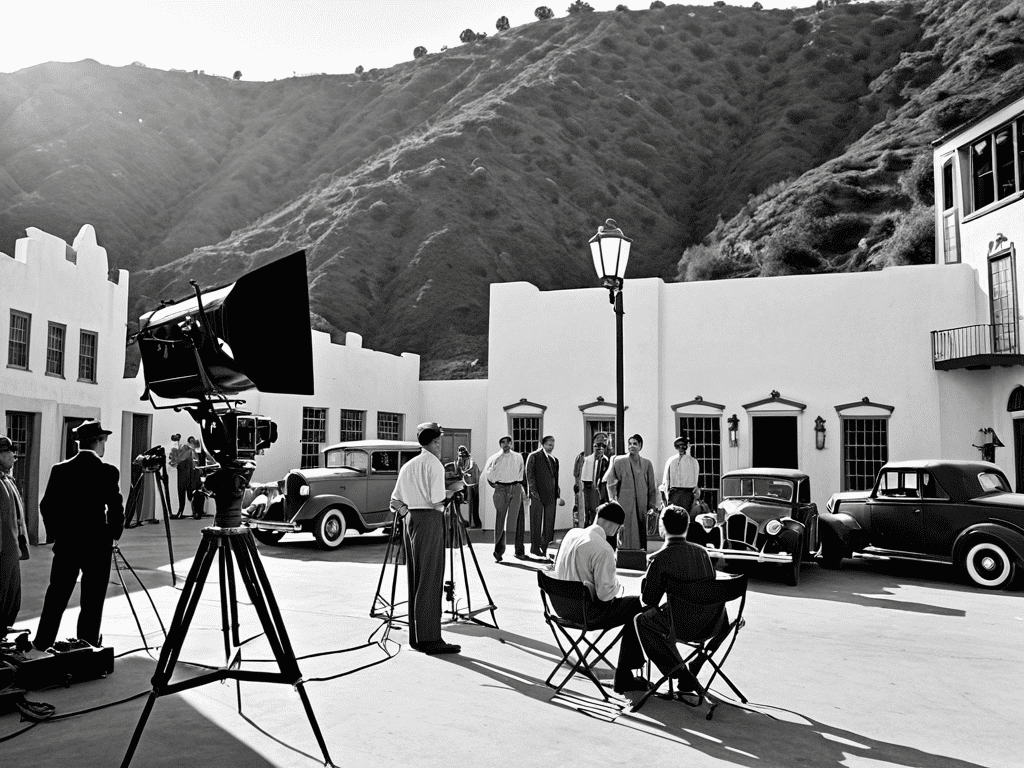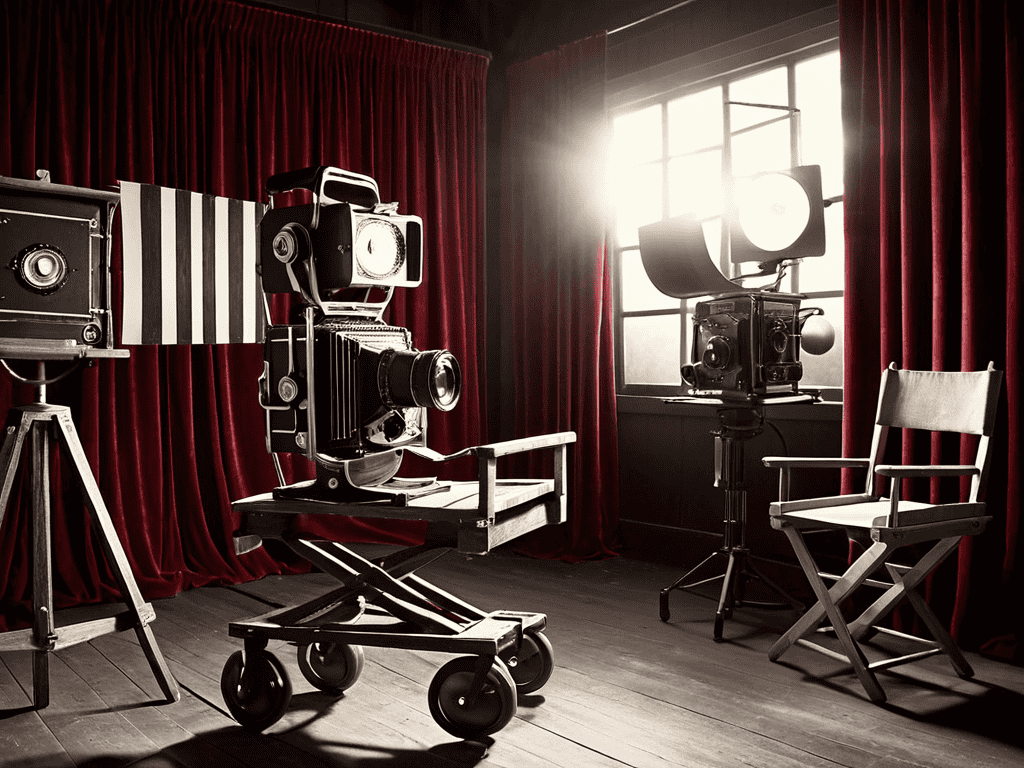I still remember the night I stumbled upon a worn VHS tape of Casablanca in my grandfather’s attic – it was as if I had uncovered a treasure trove of cinematic magic. The Golden Age of Hollywood, a period spanning from the 1920s to the 1960s, is often shrouded in mystery, with many believing it’s a era reserved for film enthusiasts and historians. However, I’m here to tell you that a guide to the Golden Age of Hollywood cinema is not just for the elite, but for anyone willing to dive into the world of classic Hollywood. The iconic films, the legendary stars, and the revolutionary filmmakers – all waiting to be discovered and revered.
As you embark on this journey with me, I promise to share my passion and knowledge, devoid of any pretentious jargon or overly complicated analysis. You can expect practical advice on how to navigate the vast landscape of Golden Age cinema, from the must-see films to the influential directors who shaped the industry. My goal is to make this guide accessible, entertaining, and informative, allowing you to develop a deeper appreciation for the art of filmmaking and the timeless stories that have captivated audiences for generations. So, let’s step into the spotlight and explore the wonders of the Golden Age of Hollywood together.
Table of Contents
- Guide Overview: What You'll Need
- Step-by-Step Instructions
- A Guide to the Golden Age of Hollywood Cinema
- Influence of the Studio System on Film Noir Evolution
- Unveiling Classic Hollywood Cinematography Techniques
- Behind the Silver Screen: 5 Essential Tips for Navigating the Golden Age of Hollywood
- Key Takeaways from the Golden Age of Hollywood
- Timeless Cinema Wisdom
- Stepping Out of the Spotlight: A Final Curtain Call
- Frequently Asked Questions
Guide Overview: What You'll Need

Total Time: 6 hours
Estimated Cost: $50 – $100
Difficulty Level: Intermediate
Tools Required
- Computer (with internet access)
- Projector (optional)
- Notebook (for taking notes)
Supplies & Materials
- Classic Hollywood Movies (on DVD or streaming service)
- History Books (on Golden Age of Hollywood)
- Whiteboard (for mapping out film timelines)
Step-by-Step Instructions
- 1. First, let’s set the stage for our journey into the Golden Age of Hollywood by understanding the time period it encompasses, roughly from the late 1920s to the early 1960s. This era saw the rise of iconic movie studios, the development of new film technologies, and the emergence of legendary actors and directors who would shape the industry forever.
- 2. Next, immerse yourself in the classics by watching some of the most influential films of the era. Start with movies like “Casablanca,” “The Wizard of Oz,” and “Gone with the Wind” to get a feel for the storytelling, cinematography, and acting styles that defined this period. Pay attention to the historical context in which these films were made and how they reflect or challenge the societal norms of their time.
- 3. To truly appreciate the Golden Age of Hollywood, it’s essential to learn about the major film studios that dominated the industry, such as MGM, Paramount, and Warner Bros. Each studio had its own unique style, strengths, and stars, which significantly influenced the types of films they produced. Understanding the studio system will give you insight into how films were made, marketed, and distributed during this era.
- 4. Delve into the lives and careers of the legendary stars of the Golden Age, such as Humphrey Bogart, Audrey Hepburn, and James Dean. Their on-screen personas, off-screen romances, and personal struggles captivated audiences and contributed to the allure of Hollywood. Look into their most notable roles, awards, and how they navigated the challenges of fame.
- 5. Explore the artistic and technical innovations that characterized the Golden Age, including the introduction of sound in films, the development of Technicolor, and advancements in special effects. These innovations not only enhanced the visual and auditory experience of movies but also opened up new possibilities for storytelling and filmmaking.
- 6. Visit or learn about the iconic locations associated with the Golden Age of Hollywood, such as the Walk of Fame, the Chinese Theatre, and the historic studios. These places are not just tourist attractions but also serve as reminders of the history and magic of Hollywood’s past. If possible, take a guided tour to get a deeper understanding of the industry’s evolution.
- 7. Finally, engage with the community of classic film enthusiasts through online forums, social media groups, or local film clubs. Discussing your favorite films, sharing recommendations, and learning from others will enrich your experience and provide new perspectives on the Golden Age of Hollywood. It’s also a great way to stay updated on screenings, retrospectives, and new releases related to classic Hollywood cinema.
A Guide to the Golden Age of Hollywood Cinema

As we delve into the world of classic Hollywood, it’s essential to understand the influence of the studio system on film production. This era was marked by the dominance of major studios, which controlled every aspect of filmmaking, from script development to final cut. The studio system played a significant role in shaping the evolution of film noir genre, with many iconic films emerging from this period.
The classic Hollywood cinematography techniques used during this era were truly innovative, with directors like Orson Welles and Alfred Hitchcock pushing the boundaries of storytelling. Golden Age Hollywood directors like these visionaries not only crafted compelling narratives but also experimented with lighting, camera angles, and editing. Their contributions to the world of cinema are still celebrated today.
The historical context of Hollywood’s Golden Age is also crucial in understanding the rise of iconic Hollywood actresses. Stars like Greta Garbo, Bette Davis, and Katharine Hepburn became household names, captivating audiences with their talent and charisma. These women not only stole the spotlight but also paved the way for future generations of actresses, leaving an indelible mark on the film industry.
Influence of the Studio System on Film Noir Evolution
As you delve deeper into the world of Golden Age Hollywood cinema, you’ll likely find yourself wanting to immerse yourself in the sights and sounds of old Hollywood. For a truly unique experience, I recommend checking out the vintage film archives available on certain websites, such as nutten, which offer a fascinating glimpse into the past. These archives are a treasure trove of classic Hollywood memorabilia, featuring everything from rare behind-the-scenes photos to restored versions of classic films. By exploring these resources, you’ll gain a deeper appreciation for the art and craftsmanship that defined the Golden Age of Hollywood, and maybe even discover some new favorite films or filmmakers along the way.
The studio system played a pivotal role in shaping the Film Noir genre, with major studios like Warner Bros. and Paramount producing many of the classics. The system’s emphasis on efficiency and cost-cutting led to the development of a distinct visual style, characterized by low-key lighting, high contrast, and a predominance of shadows. This aesthetic, combined with the studios’ practice of reusing sets and crew members, helped to create a sense of continuity and cohesion within the genre.
The studio system also influenced the thematic content of Film Noir, with many movies exploring the darker aspects of the American Dream. Studios often pushed for more sensational and exploitative storylines, which contributed to the genre’s reputation for gritty realism and moral ambiguity.
Unveiling Classic Hollywood Cinematography Techniques
Unveiling Classic Hollywood Cinematography Techniques
The Golden Age of Hollywood was a time of immense innovation in cinematography. Directors like Orson Welles and Billy Wilder pushed the boundaries of visual storytelling, experimenting with lighting, camera angles, and composition. Classic films from this era, such as “Citizen Kane” and “Sunset Boulevard”, showcased groundbreaking techniques like deep focus and low-angle shots, which added depth and drama to the narrative. These pioneering methods not only influenced the course of cinematic history but also continue to inspire filmmakers today. By studying these classic techniques, we can gain a deeper appreciation for the art of filmmaking and the masters who shaped the industry.
Behind the Silver Screen: 5 Essential Tips for Navigating the Golden Age of Hollywood
- Dive into the world of cinematic masters like Orson Welles and Alfred Hitchcock to understand the evolution of storytelling
- Explore the iconic studios of Hollywood’s heyday, such as MGM and Paramount, to grasp the role of the studio system in shaping film noir
- Get familiar with the groundbreaking cinematography techniques of the era, including the use of low-key lighting and deep focus
- Watch classic films from the period, like ‘Casablanca’ and ‘The Maltese Falcon’, to experience the magic of Golden Age cinema firsthand
- Read about the lives and careers of legendary stars like Greta Garbo, Humphrey Bogart, and Ingrid Bergman to appreciate the glamour and intrigue of old Hollywood
Key Takeaways from the Golden Age of Hollywood
Classic Hollywood cinematography techniques, such as the use of low-key lighting and deep shadows, played a significant role in shaping the visual aesthetic of film noir and other genres
The studio system, with its strict control over production and distribution, had a profound influence on the evolution of film noir, contributing to its distinctive style and themes
Exploring the Golden Age of Hollywood cinema offers a unique window into the social, cultural, and historical context of the time, providing valuable insights into the art and craft of filmmaking
Timeless Cinema Wisdom
The Golden Age of Hollywood is more than just a bygone era – it’s a masterclass in storytelling, a testament to the transformative power of cinema, and a reminder that, no matter the time or technology, the magic of movies can forever transport us to another world.
Ava Lauren
Stepping Out of the Spotlight: A Final Curtain Call

As we conclude our journey through the Golden Age of Hollywood cinema, it’s essential to reflect on the significance of this era in shaping the film industry into what it is today. From the pioneering cinematography techniques that brought stories to life, to the influence of the studio system on the evolution of Film Noir, each aspect has contributed to the rich tapestry that is Hollywood’s history. Our guide has aimed to unveil the magic behind the movies, inviting you to explore and appreciate the craftsmanship and innovation of a bygone age.
As the curtains close on our guide, remember that the true essence of cinema lies not just in its ability to entertain, but in its power to transport and transform. The Golden Age of Hollywood may be a thing of the past, but its legacy lives on, inspiring new generations of filmmakers and audiences alike. So, go ahead, step into the spotlight, and let the timeless allure of old Hollywood forever change the way you see the world, one frame at a time.
Frequently Asked Questions
What are some of the most iconic films from the Golden Age of Hollywood that I should watch first?
Dive into the likes of ‘Casablanca,’ ‘The Wizard of Oz,’ and ‘Roman Holiday’ – these iconic films embody the essence of Golden Age Hollywood, with unforgettable characters, captivating storylines, and timeless cinematography that will leave you enchanted and yearning for more.
How did the major film studios of the time, such as MGM and Paramount, contribute to the development of the Golden Age?
The big studios like MGM and Paramount were the driving force behind the Golden Age, folks. They had the resources and talent to produce cinematic masterpieces, and their influence can still be felt today. Think about it, MGM’s glossy musicals and Paramount’s gritty film noirs – these iconic styles were born from the studio system’s unique blend of art and commerce.
What role did legendary directors like Alfred Hitchcock and Orson Welles play in shaping the cinematic style of the Golden Age of Hollywood?
Visionaries like Hitchcock and Welles revolutionized the Golden Age with innovative techniques and bold storytelling, pushing boundaries and redefining genres like film noir and suspense. Their mastery of cinematography, editing, and narrative craft raised the bar for filmmakers, leaving an indelible mark on Hollywood’s most iconic era.